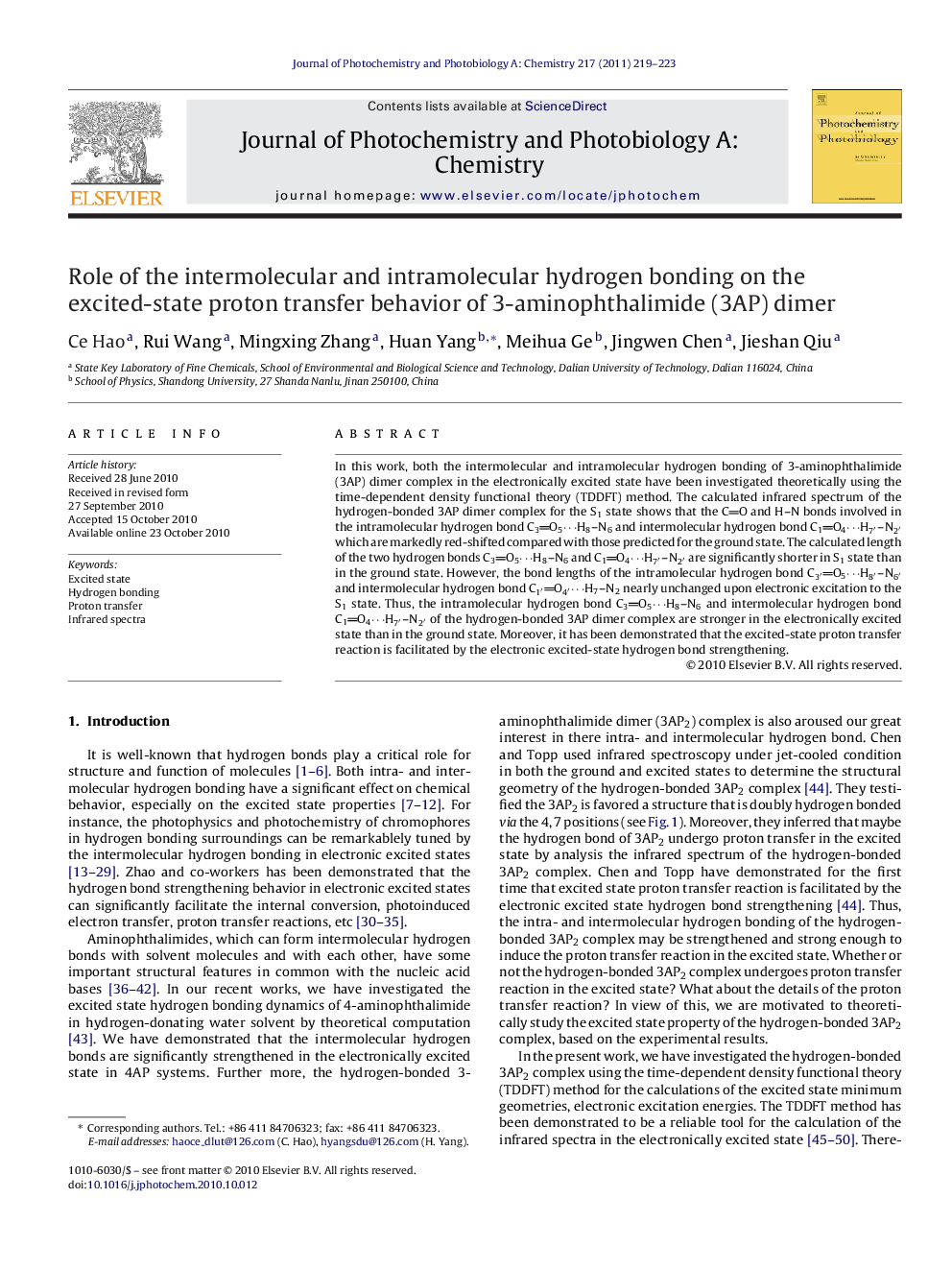| کد مقاله | کد نشریه | سال انتشار | مقاله انگلیسی | نسخه تمام متن |
|---|---|---|---|---|
| 27576 | 44030 | 2011 | 5 صفحه PDF | دانلود رایگان |

In this work, both the intermolecular and intramolecular hydrogen bonding of 3-aminophthalimide (3AP) dimer complex in the electronically excited state have been investigated theoretically using the time-dependent density functional theory (TDDFT) method. The calculated infrared spectrum of the hydrogen-bonded 3AP dimer complex for the S1 state shows that the CO and H–N bonds involved in the intramolecular hydrogen bond C3O5⋯H8–N6 and intermolecular hydrogen bond C1O4⋯H7′–N2′ which are markedly red-shifted compared with those predicted for the ground state. The calculated length of the two hydrogen bonds C3O5⋯H8–N6 and C1O4⋯H7′–N2′ are significantly shorter in S1 state than in the ground state. However, the bond lengths of the intramolecular hydrogen bond C3′O5⋯H8′–N6′ and intermolecular hydrogen bond C1′O4′⋯H7–N2 nearly unchanged upon electronic excitation to the S1 state. Thus, the intramolecular hydrogen bond C3O5⋯H8–N6 and intermolecular hydrogen bond C1O4⋯H7′–N2′ of the hydrogen-bonded 3AP dimer complex are stronger in the electronically excited state than in the ground state. Moreover, it has been demonstrated that the excited-state proton transfer reaction is facilitated by the electronic excited-state hydrogen bond strengthening.
Journal: Journal of Photochemistry and Photobiology A: Chemistry - Volume 217, Issue 1, 1 January 2011, Pages 219–223